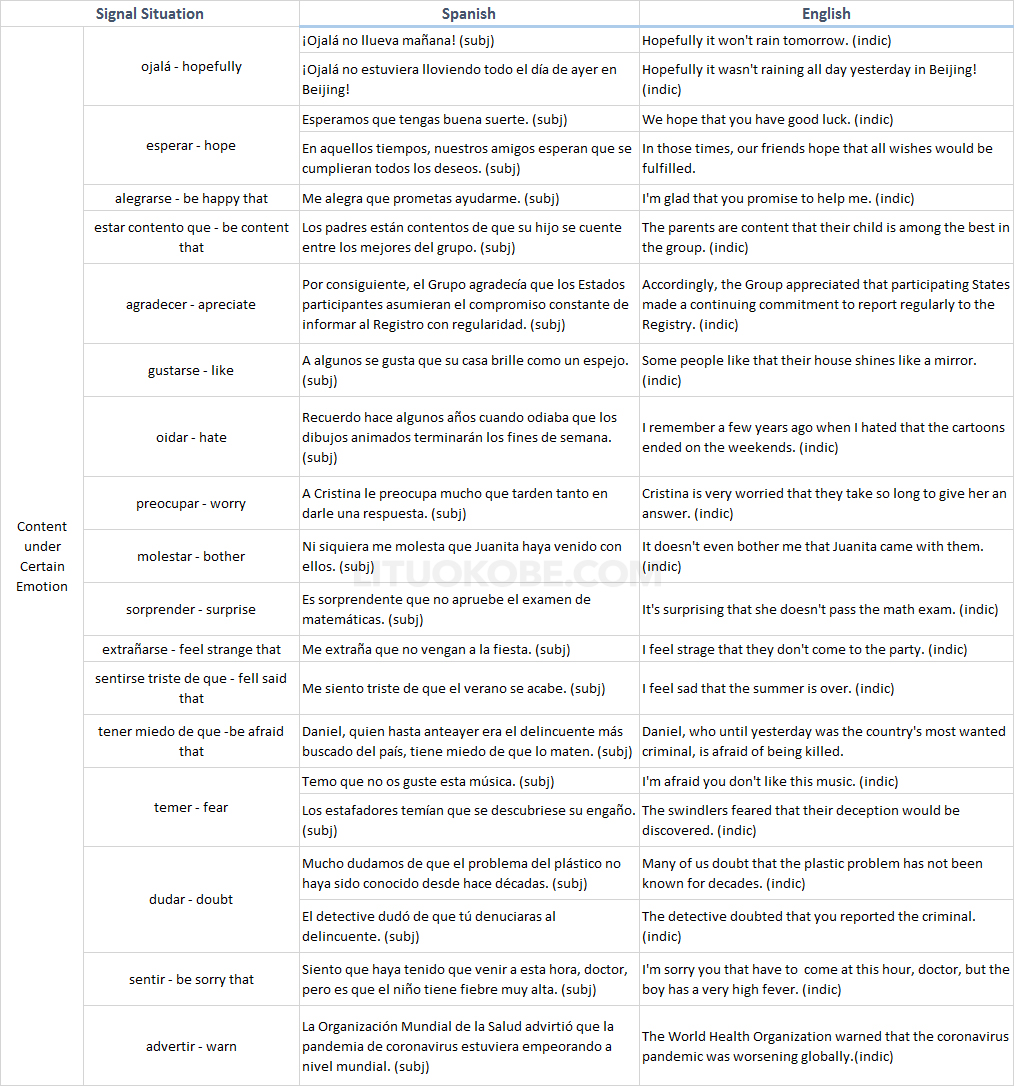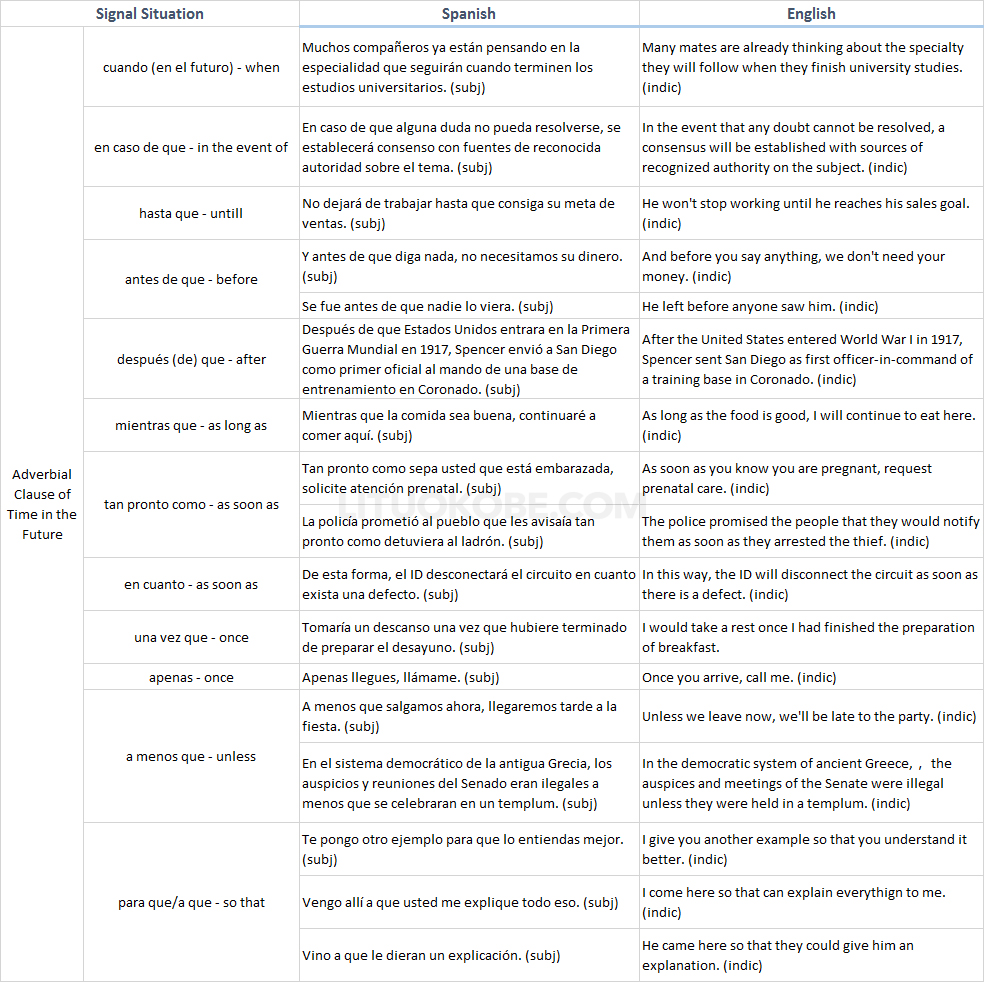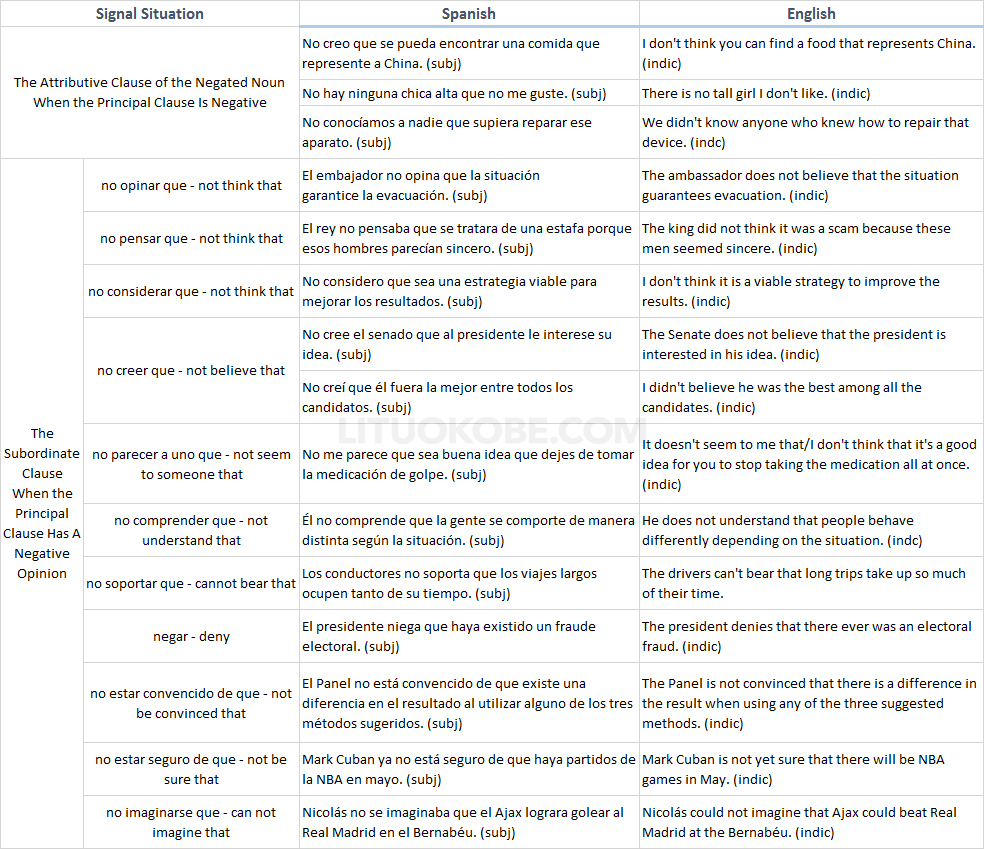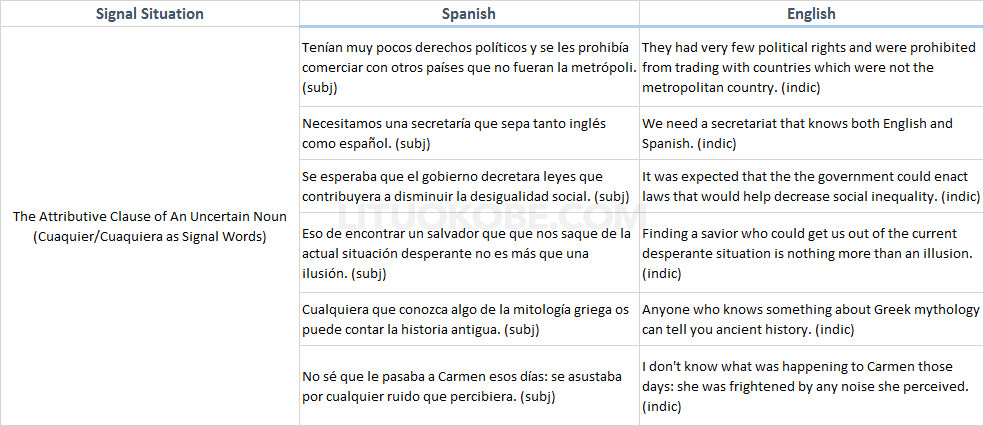
Welcome back. Hope you enjoyed The Comparison of the Subjunctive Mood in English and in Spanish (Part 2). Let’s continue!
4-2. Subjunctive for Spanish, Indicative for English – Signal Situation
Additionally, for some cases where the moods are not consistent in Spanish and in English, it is more convenient to digest the cases as “signal situations”.
First of all, the most common situation is that when the principal clause of a Spanish sentence possesses certain subjective emotion, the subordinate clause that delivers the content of this emotion needs to be in the subjunctive mood. And this subjunctivity is not necessary in English.
As well, this situation is an extension of the subjective scenario in Spanish which doesn’t exist in English.


Secondly, when an adverbial clause of time in the future appears, the Spanish speakers, as prudent as they can be, consider its content irrelevant to the current reality, therefore meaningless to tell true or false, no matter how possible it will actually happen in the future. While in English, we prefer the present indicative form in the clause, and the future tense in the principal clause (occasionally the present tense as well).
This kind of adverbial clauses of time can be led by words like “cuando”/ “when”, as well as “hasta”/ “until”, “antes de que”/ “before”, “después (de) que”/ “after”, “tan pronto come”/ “as soon as”, “a menos que”/ “unless”, and “para que”/ “so that” (for adverbial clause of purpose though, the content still happens in the future). It is not hard to understand that, for example, a sentence with “a menos que”/ “unless” usually means something will happen if you won’t do certain stuff, but there still exists a chance to do it in the future. If you observe the phrases mentioned above, you will find that all the contents after them actually will happen in the future, just with different possibilities, and with different attitudes accordingly. Therefore, these clauses need to be subjunctive in Spanish, but indicative in English.


At the same time, in Spanish, when the principal clause is negative, the subjunctive mood will be applied to the attributive clause of the noun that is negated; the subordinate clause needs to be subjunctive as well when the principal clause is expressing a negative opinion. In both cases, we use the indicative mood in English.


If we extend the idea that the attributive clause of the negated noun needs to be subjunctive when the principal clause is negative, we can better understand another concept that in Spanish, the subjunctive mood is imperative for any attributive clause when the noun is uncertain, which could imply the speaker’s cognition of his/her information. This does not exist in English.
For example:
Nunca olvido a los que me han ayudado.
I never forget those who have helped me.
“Those who have helped me” here have already finished the action of helping and their identities are clear, so we use the indicative mood in Spanish.
Nunca olvidaré a los que me hayan ayudado.
I will never forget those who have helped me.
“Those who have helped me” here are mentioned as a general reference, including anyone who will lend a hand in the future, which means they are not certain, thereby the subjunctive mood is employed in Spanish.
Another example:
De las ciudades en que has estado, ¿cuál te ha gustado más?
Of the cities you’ve been to, which one do you like the most?
The questioner knows the cities that the respondent has been to, and “the cities you’ve been to” have a definite scope, that way the description of the query is in the indicative mood in Spanish.
De las ciudades en que hayas estado, ¿cuál te ha gustado más?
Of the cities you’ve been to, which one do you like the most?
The questioner has no idea, or at least no full idea of the cities where the respondent has traveled, then “the cities you’ve been to” is an uncertain list, consequently the subjunctive mood is used in the question in Spanish.
This reflection of the self-cognition from the speaker only exists in Spanish between these two languages.
Last, in Spanish, without exception, the situation above applies when the noun is “cuaquier/cuaquiera”, and its attributive clause must be subjunctive.


Epilogue
Here is the comparison of the subjunctive mood in Spanish and in English. The examples are from the Internet. Hope you enjoy it.